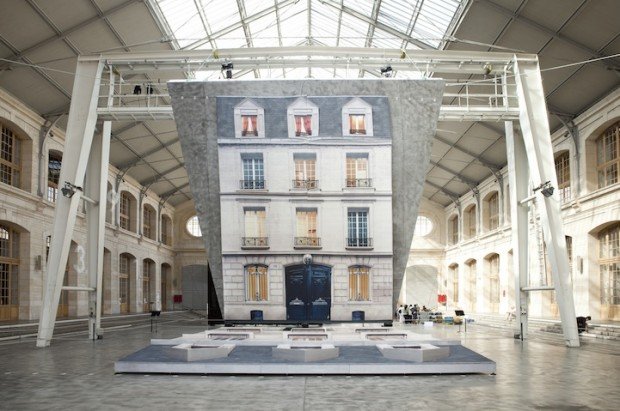

The Baltyk Building by MVRDV located in Poland seems to be a precariously balanced structure. Delavie brought a printed canvas, come to life as the façade was draped into distorted illusion to conceal the construction site. It was made during the renovation of the Classical Haussmannian ve building located at 39, George V Avenue in Paris, France. You aren’t tripping as this building is a temporary mural created by artist Pierre Delavie in 2007. These illusory architectural designs are few mesmerizing examples of how the use of optical illusions has created a mind-boggling impression on the spectators. What might stun you is the fact that optical illusion is not a new culture, it was first used by the Greeks in the course of history to make their structures look symmetrical and perfectly proportionate with the illusion of slanting roof and dense column.įrom classical architecture, where architects displayed a highly developed knowledge of geometrical illusions, to the present time of contemporary architecture where new illusory effects are introduced through the developing digital technology.

The ever-changing relations of lines and forms in architecture vary with the viewpoint introducing varied illusions. Not just artists and designers are seen in their game but architects have too stepped into this world of mind trickery, as most say it.Īrchitects continue to push the boundaries of the 3-dimensional perspective. Working with the realm of illusion, Chinneck continues to please and shock his audiences through public art projects that bring a lighthearted surrealism to street life and city structures.Illusion art culture has made its comeback through the most fascinating and awe-struck pieces which have shaken people all over the world. He created the floating illusion by hiding a four-ton counterweight that attaches to the top of the structure.Ĭhinneck is currently working on a house of wax bricks, designed to melt over the course of 30 days. The artist's past works include Under the Weather but Over the Moon, an upside-down building, From the Knees of My Nose To the Belly of My Toes, a sagging brownstone, concrete rugs, and broken glass artworks. For the building's facade, Chinneck worked on a 1:1 ratio, and digitally carved polystyrene glued to twin wool. For Take My Lightening but Don’t Steal My Thunder, Chinneck collaborated with over one hundred people in various disciplines, including planning consultants, structural engineers, architectural consultants, steelworkers, carpenters, painters, and 3d modelers over an eight month period. In an interview with DesignBoom, Chinneck states that, due to the ambition and scale of his projects, he often takes the role of a project manager. Take My Lightning but Don’t Steal My Thunder pays homage to the Covent Garden Square's late Georgian aesthetic by seamlessly integrating with the surrounding architecture. A street performer-populated public space in London that sits adjacent to an opera house, the Covent Garden inspired Chinneck to embrace the “performance culture” in his structure and to create something that would appeal to a broad demographic.

Past artists and designers include Jeff Koons, Damien Hirst, Banksy, Sam Taylor-Johnson, and Martha Fiennes. Chinneck is only one of a handful of contemporary artists who have made the Covent Garden Garden their place for site-specific installation.


 0 kommentar(er)
0 kommentar(er)
